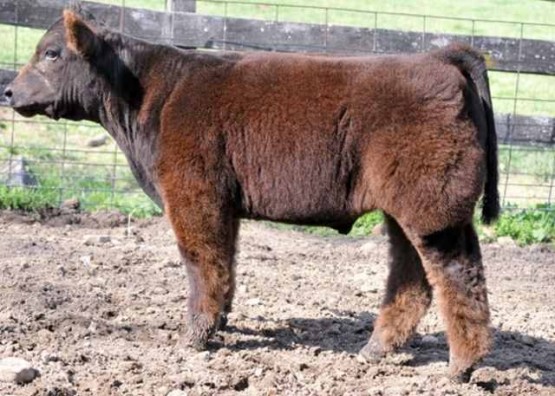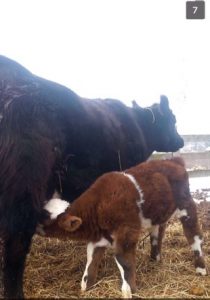

Not only can a Dexter be the ideal family cow/pet, but, pound for pound, they are far more economical than their larger counterparts. The breed's ability to adapt to varying and extreme climatic conditions and to different systems of management is a typical characteristic. Ensure the bull has an easy calving record, and that cows are 'fit' and not overweight at calving. Care must be taken if a continental bull is to be used. Mature cows can be successfully crossed with most native beef breeds, and will produce excellent fast growing progeny. The milk is of very good quality with high butterfat and protein levels average BF % is well over 4% and protein 3.51%. Dexters kept as dairy cows will yield on average, 10 - 12 litres daily (3050 - 3660 litres per 305 day lactation), with some individuals yielding 14 litres or more (4080 litres per 305 day lactation). A cow kept as a suckler will raise its own calf as well as a larger commercial calf and do them both well. For instance, the average daily milk yield for a house cow will be some 8 - 10 litres (2450 - 3050 litres per 305 day lactation). Milk yields vary as to whether the cows are kept for dairy cows, sucklers or house cows.

Because their good meat to bone ratio, a killing-out percentage of over 56% can be achieved. Dexter steers can finish on grass at 20 -24 months of age without supplementary feeding, with average carcase weights of between 145 - 220 Kg's. Beef of excellent quality and flavour, with good marbling, can be produced economically. Dexters are noted for their longevity and can live up to 25 years and should breed regularly for 14 years or more. Heifers mature young and can be put to the bull at 15 - 18 months of age. Calving problems are rare and newly born calves are up on their feet very quickly with calves weighing 25-35 pounds at birth. Most are horned although a very few naturally polled animals are becoming available.ĭexter cows are extremely maternal and because of their dual purpose qualities will milk well. The breed comes in three colours, predominately black, but also red and dun. There are two recognized types, short legged and non-short, both of which have their equal merits. It is a dual-purpose breed, with the average weight of a cow being some 300 - 350 Kg's and standing 92cm - 107cm at the shoulder. Photo courtesy of Freedom Farm Dexters, The Dexter breed is a small breed of cattle. As a result, the Dexter is the best example of a domestic cattle breed saved from extinction. More recently, their attractiveness to small landholders has seen a significant increase in their numbers globally. In the 1970s, they were designated as rare and endangered.

As the 20th century progressed, Dexter numbers declined. David Low stated that a Mr Dexter had produced his curious breed by selection from the best of the hardy mountain cattle of the area, and to have succeeded to a very high degree.Īt the turn of the 20th century, Dexters became the show cattle of the English gentry. The frequently heard theory that the Dexter are a comparatively new breed is a complete fallacy as the breed is fully described and mentioned by its proper name, in a report on Irish cattle written in 1845, by Mr David Low.įrom this publication it is noted that the breed owes its modern appearance, name, and probably qualities to a Mr Dexter who was agent to a Lord Howarden who came to Ireland in 1750 and made his home in Co Tipperary. Like the Kerry, they are descended from the predominately black cattle of the early Celts. HistoryThe Dexter originated in the South Western region of Ireland where they were originally kept by small landholders and known as the "poorman's cow".


 0 kommentar(er)
0 kommentar(er)
